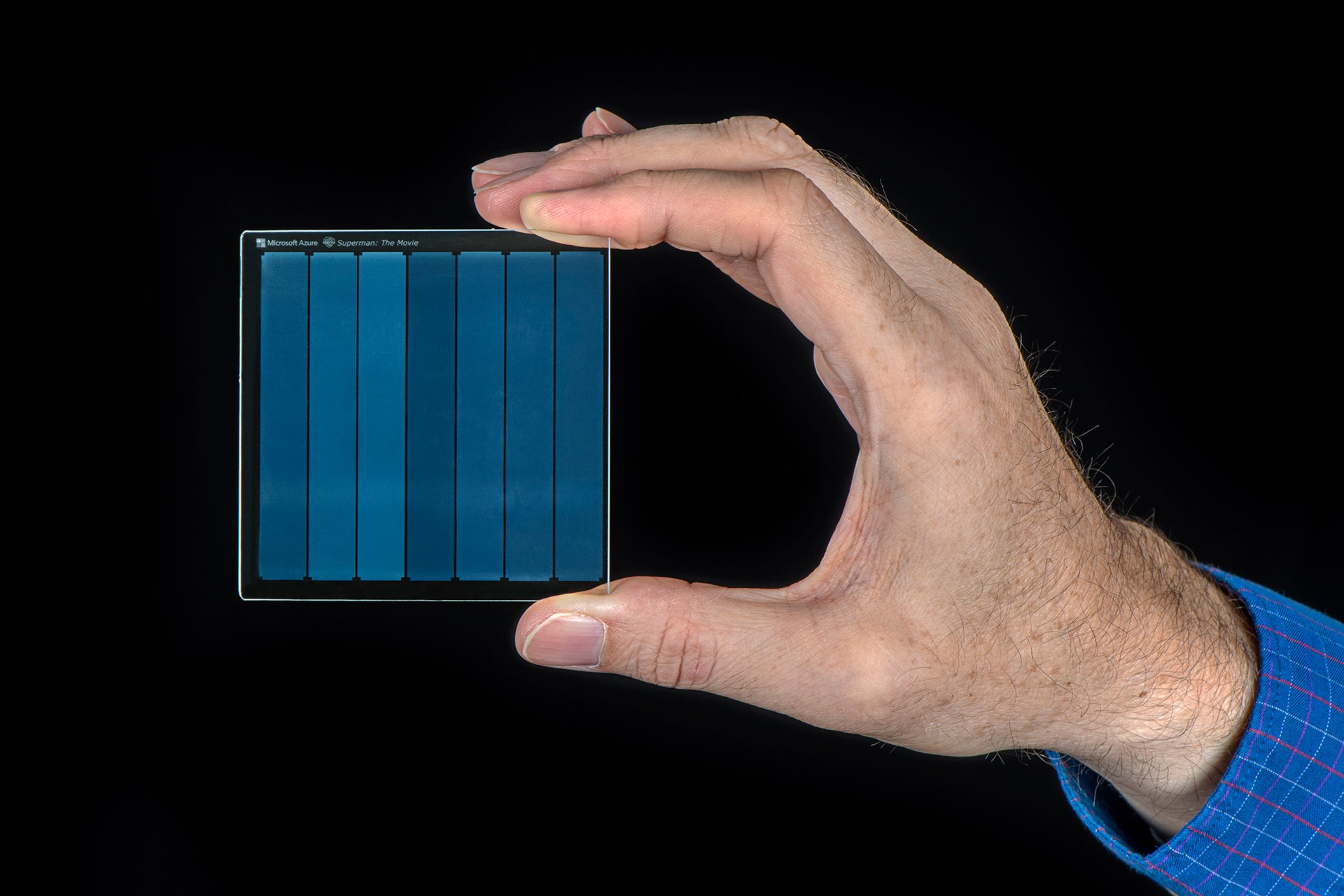Microsoft freakin' stored the 1978 Superman movie on a piece of glass

What you need to know
- Microsoft and Warner Bros. stored 1978's "Superman" on a quartz glass disc.
- This is a proof of concept for "Project Silica."
- Microsoft hopes to pioneer a cheaper method of long-term storage.
Microsoft showed off an impressive method of data storage today at its Ignite 2019 conference. Microsoft worked with Warner Bros. to store and retrieve the entirety of the 1978 "Superman" movie on a piece of glass. Just as impressive is the size of the glass; at 75 by 75 by 2 millimeters thick, the glass disk is "roughly the size of a drink coaster," Microsoft says.
This is a proof of concept for "Project Silica," a project at Microsoft to use a combination of laser optics and AI to store data in quartz glass. "A laser encodes data in glass by creating layers of three-dimensional nanoscale gratings and deformations at various depths and angles," Microsoft said in a blog post. "Machine learning algorithms read the data back by decoding images and patterns that are created as polarized light shines through the glass."
Microsoft says Warner Bros. initially approached them to come up with new technologies to effectively store its library of films in a non-destructive way. The goal was to find a storage method that could "last hundreds of years," withstanding threats like floods and solar flares. According to Microsoft, the silica glass can survive, with data intact, through being boiled in water, baked, microwaved, demagnetized, and more.
Beyond films, Microsoft hopes that Project Silica can work as a potential storage method for the cloud, ultimately driving down the cost of long-term storage. "One big thing we wanted to eliminate is this expensive cycle of moving and rewriting data to the next generation," said Ant Rowstron, a paertner debuty lab director of Microsoft Research Cambridge. "We really want something you can put on the shelf for 50 or 100 or 1,000 years and forget about until you need it."
For now, Warner Bros. sees Project Silica as a potentially effective way for preserving its vast catalog of films and television. "If we can take the digital representation of those pixels and put it on a medium like silica and read it back off exactly as it was when it came out of the camera, we've done our preservation job to the very best of our ability. That's what I love about this," said Brad Collar, Warner Bros. senior vice president of global archives and media engineering.
Get the Windows Central Newsletter
All the latest news, reviews, and guides for Windows and Xbox diehards.
Dan Thorp-Lancaster is the former Editor-in-Chief of Windows Central. He began working with Windows Central, Android Central, and iMore as a news writer in 2014 and is obsessed with tech of all sorts. You can follow Dan on Twitter @DthorpL and Instagram @heyitsdtl.

